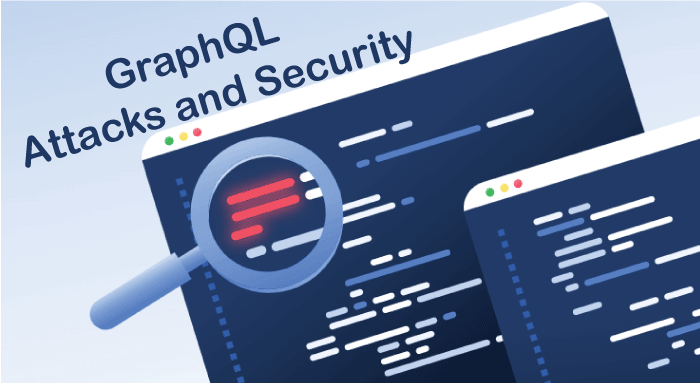GraphQL Attacks and Security

Facebook created GraphQL, a query language for APIs (Application Programming Interfaces). It is a more effective substitute for conventional RESTful APIs since it enables clients to just request the data they want from the server.
With GraphQL, clients may send a query to the server that details exactly what data they want and in what format. The server then sends less information across the network and provides just the data that was requested in a JSON format.
The flexibility of GraphQL is one of its main benefits. Complex searches with nested fields can be specified by clients, and the server can deliver the needed data in a single answer. Several round trips to the server are no longer necessary, which is a typical problem with RESTful APIs.
As a query language for APIs, GraphQL has gained popularity and makes it possible for clients and servers to communicate effectively. Unfortunately, it is not impervious to security risks like any other technology. Organizations utilizing GraphQL are increasingly concerned about GraphQL assaults since they can result in the exposing of sensitive data, denial of service attacks, and other nefarious actions. In this post, we'll talk about some typical GraphQL attacks and how to defend against them.
- Injection Attacks: Injection attacks are among the most prevalent GraphQL attack types. An attacker can include malicious code into a GraphQL query and control the server's behavior by taking advantage of flaws in the query. This may lead to the exposing of private information, a denial of service, or even complete server control. It is crucial to sanitize user input and check the input data in order to prevent injection attacks.
- Denial of Service (DoS) Attacks: Denial of Service (DoS) attacks that flood the server with a large number of requests can cause server failures or make GraphQL APIs unusable. Attackers may take advantage of poorly worded queries to launch denial-of-service (DoS) attacks. Server-side throttling systems and query complexity restrictions must be put in place to stop DoS attacks.
- Authorization and Authentication Attacks: Attacks on authorization and authentication can happen when a hacker gets past the security system and accesses information they are not allowed to see. For instance, attackers may get access to user data by abusing improperly configured authentication systems, exposing sensitive data. To stop such attacks, it's crucial to create strong authentication procedures.
- Information Disclosure Attacks: When a hacker uses GraphQL queries to obtain private data about the server, database, or other resources, this is known as an information disclosure attack. Information disclosure attacks may result from improperly built GraphQL endpoints that offer excessive information. Access to sensitive information should be controlled, and restrictions on query complexity should be imposed to prevent information disclosure threats.
- Schema Manipulation Attacks: Attackers that modify the GraphQL schema to obtain unauthorized access to data or functionality are known as "schema manipulation attacks." Attackers can, for instance, implement a new query that gives them the ability to access sensitive data without being authenticated. Server-side schema validation measures must be put in place to stop schema manipulation attacks.
Since it allows for effective communication between clients and servers, GraphQL has grown in popularity as a platform for creating APIs. Security has become a top worry for corporations, though, since GraphQL is being adopted more widely.
- Input Validation: Input validation is one of the most significant security techniques. Attackers can utilize GraphQL queries' weaknesses to run malicious code because they are user-generated. It's crucial to validate user input by defining input types and enforcing them on the server-side in order to avoid this.
- Query Complexity Limits: Complex and nested GraphQL queries might cause excessive resource usage and slow the server down. Attackers may take advantage of poorly crafted queries to launch DoS attacks by using an excessive amount of resources. Limits on query complexity must be implemented on the server side to avoid this.
- Authentication and Authorization: To stop unauthorized access to sensitive data, authentication and permission procedures must be put in place. To guarantee that only authorized users may access sensitive data, it is crucial to authenticate users before enabling them to perform queries and to enforce permission rules.
- Rate Limiting: By restricting the number of queries a user may run in a specific amount of time, rate limiting can avoid the excessive usage of resources. This can stop DoS attacks and guarantee equitable resource utilization.
- Use HTTPS: The information exchanged between the client and the server should be encrypted using HTTPS (HyperText Transfer Protocol Secure). By doing this, eavesdropping and man-in-the-middle attacks that jeopardize data privacy may be avoided.
- Schema Validation: When an attacker updates the GraphQL schema to obtain unauthorized access to data or functionality, schema validation can stop the attack. To stop assaults on schema manipulation, server-side schema validation methods must be put in place.
- Regular Security Audits: To find and quickly fix any vulnerabilities in the GraphQL implementation, regular security audits should be carried out.
In order to prevent security breaches and data theft, GraphQL must be secured in network systems. Organizations may reduce the risk of attacks and maintain the security of their APIs and data by adhering to these best practises. To ensure a solid and safe GraphQL implementation, it's also crucial to keep up with the most recent security developments and put those trends into practise.
|

 For Videos Join Our Youtube Channel: Join Now
For Videos Join Our Youtube Channel: Join Now









